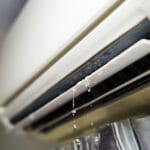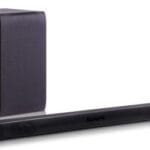Liftmaster diagnostic codes help identify garage door issues quickly. These codes save time and prevent hassle.
In this post, we will explore Liftmaster diagnostic codes in detail. Understanding these codes can be very useful for homeowners and technicians alike. They help pinpoint problems, making repairs easier and faster. Whether your garage door won’t open or close, these codes can guide you to the solution.
By familiarizing yourself with them, you can maintain your garage door more effectively. Let’s dive into the world of Liftmaster diagnostic codes and see how they can assist you in keeping your garage door in top shape.
Credit: fccid.io
Introduction To Liftmaster Diagnostic Codes
Understanding Liftmaster diagnostic codes can help you maintain your garage door opener. These codes indicate various issues that may arise with your Liftmaster system. By learning these codes, you can troubleshoot problems more effectively and keep your garage door functioning smoothly.
Importance Of Diagnostic Codes
Diagnostic codes are essential for identifying problems with your Liftmaster garage door opener. They provide specific information about what might be wrong. This helps you pinpoint issues without guesswork. These codes save time and reduce frustration by offering clear guidance. Knowing these codes can also prevent minor issues from becoming major repairs.
Common Issues Indicated
Several common problems can be identified through Liftmaster diagnostic codes. One frequent issue is a misaligned safety sensor. This can stop your garage door from closing properly. Another common code points to problems with the motor. This may cause the door to move unevenly or not at all. Additionally, codes can indicate wiring issues. This might result in intermittent operation or complete failure of the system.
By familiarizing yourself with these codes, you can address problems early. This keeps your Liftmaster system running reliably and extends its lifespan.

Credit: fccid.io
How To Read Liftmaster Diagnostic Codes
Liftmaster diagnostic codes help identify issues with your garage door opener. Each code corresponds to a specific problem. Follow the manual to understand and resolve these codes easily.
Understanding Liftmaster diagnostic codes is crucial for maintaining your garage door opener. These codes help identify specific issues with the unit. By learning to read these codes, you can troubleshoot and fix problems quickly. This section will guide you through the process step by step.Locating The Diagnostic Code
First, locate the diagnostic code on your Liftmaster unit. This code usually appears on the opener’s motor. Check the back or the side of the motor housing. Look for a small LED light that blinks in patterns.Next, count the number of times the light blinks. Each pattern corresponds to a specific diagnostic code. Make sure to note the pattern accurately. It helps in identifying the issue correctly.Interpreting The Flashing Lights
Once you have the blinking pattern, interpret the code. Each blink sequence represents a different problem. For example, one flash might indicate a sensor issue. Two flashes could mean a motor problem.Refer to the Liftmaster manual for a detailed list of codes. The manual provides explanations for each code. This helps in understanding the specific issue with your opener.Use the information to troubleshoot the problem. You might need to adjust sensors or reset the motor. Following the codes ensures you address the correct issue.Common Liftmaster Diagnostic Codes
Understanding Liftmaster diagnostic codes can save time and money. These codes help identify issues with your garage door opener. Each code points to a specific problem, making troubleshooting easier. Let’s explore some common Liftmaster diagnostic codes and what they mean.
Code 1-1: Power Issues
Code 1-1 indicates power issues. This means the garage door opener isn’t receiving enough power. Check the power source. Ensure the unit is plugged in. Inspect the circuit breaker. Reset it if needed. If the issue persists, check the wiring. Loose or damaged wires can cause power problems. Addressing these can restore normal function.
Code 1-2: Sensor Malfunctions
Code 1-2 points to sensor malfunctions. These sensors ensure safe operation. They stop the door if something is in the way. Check the sensor alignment. Misaligned sensors can cause errors. Clean the sensor lenses. Dirt or debris can block the signal. Make sure nothing obstructs the sensor path. Following these steps can resolve sensor issues.
Troubleshooting Power Issues
Liftmaster garage door openers are reliable. Yet, sometimes they face power issues. Diagnosing these problems can save you time and money. Follow this guide to troubleshoot and solve power-related issues effectively.
Checking Electrical Connections
First, inspect all electrical connections. Loose or damaged wires can cause power failures.
- Ensure the power cord is securely plugged in.
- Check the outlet for any signs of wear or damage.
- Inspect the wires connected to the opener unit.
If you find any loose connections, tighten them. Replace any damaged wires immediately. These steps can often resolve power issues.
Testing The Power Supply
If connections are intact, test the power supply. Use a multimeter to check the voltage.
- Set the multimeter to the correct voltage range.
- Place the probes on the power terminals.
- Read the voltage displayed on the multimeter.
Compare the reading with the recommended voltage for your Liftmaster model. If the voltage is low, it could indicate a problem with the outlet or the circuit. In this case, you may need to contact an electrician.
Ensuring a steady power supply is crucial for the proper functioning of your Liftmaster opener. Regular checks can prevent unexpected failures and keep your garage door operating smoothly.
Addressing Sensor Malfunctions
Liftmaster diagnostic codes help identify issues with your garage door system. One common problem is sensor malfunctions. These malfunctions can cause your garage door not to open or close correctly. Addressing these issues promptly is essential for safety and functionality.
Aligning Safety Sensors
Misaligned safety sensors can stop your garage door from working. To fix this, check if the sensors face each other. Adjust them until they align. There should be a clear path between the sensors. Use a level to ensure they are straight. Once aligned, test the door to see if it works.
Cleaning The Sensor Lenses
Dirty sensor lenses can cause malfunctions. Dust and debris block the sensor’s signal. Clean the lenses with a soft cloth. Avoid using harsh chemicals. A gentle wipe should be enough. After cleaning, check if the door operates smoothly. Regular cleaning prevents future issues.
Resolving Motor Problems
Liftmaster diagnostic codes can signal various motor problems. Understanding and resolving these issues can enhance the lifespan of your garage door opener. Here, we’ll focus on two common motor problems: overheating and lubrication.
Identifying Motor Overheating
Motor overheating can cause your Liftmaster to stop working. To identify this problem, feel the motor housing. If it’s too hot, overheating is likely. Overheating can happen due to continuous use or poor ventilation. Allow the motor to cool down. Then, check for any obstructions in the ventilation.
Lubricating Moving Parts
Lubrication is essential for smooth motor operation. Lack of lubrication can cause friction and motor strain. Regularly lubricate all moving parts. Use a high-quality lubricant. Focus on hinges, rollers, and springs. This reduces friction and helps the motor run smoothly. Proper lubrication can prevent many motor problems.
Dealing With Remote Control Failures
Remote control failures can be frustrating. They can happen at the most inconvenient times. Understanding and fixing these issues can save you time and stress. Below, we explore two common solutions.
Reprogramming The Remote
Sometimes, the remote control loses its programming. This can be due to interference or power issues. To reprogram your Liftmaster remote, follow these steps:
- Locate the “Learn” button on your garage door opener.
- Press and release the “Learn” button.
- Within 30 seconds, press and hold the button on your remote.
- Release the button when the opener’s lights blink.
Your remote should now be reprogrammed. Test it to ensure it works.
Replacing Remote Batteries
A common cause of remote failures is dead batteries. Replacing the batteries is simple:
- Open the battery cover on the remote.
- Remove the old batteries.
- Insert new batteries of the same type.
- Close the battery cover.
Always use fresh batteries. This ensures optimal performance.
Preventive Maintenance Tips
Regular maintenance of your Liftmaster garage door opener can save you from unexpected breakdowns. Performing preventive maintenance ensures your system runs smoothly. Below are some essential tips to keep your Liftmaster in top shape.
Regular Inspections
Conducting regular inspections of your Liftmaster garage door opener is crucial. Check all parts for wear and tear. Look at the cables, springs, and rollers. Ensure there are no loose bolts or screws.
- Inspect the cables for fraying.
- Examine the springs for rust or damage.
- Look at the rollers to ensure they are not worn out.
Listening to your garage door opener can also help. Unusual noises might indicate a problem. Addressing these issues early can prevent major failures.
Scheduled Servicing
Scheduling regular servicing with a professional is essential. Experts can spot issues you might miss. Aim for at least one professional check-up per year.
| Service | Frequency |
|---|---|
| Professional Inspection | Yearly |
| Lubrication of Moving Parts | Every 6 Months |
| Balance Check | Yearly |
During servicing, technicians will lubricate moving parts. They will also perform a balance check. This ensures the door opens and closes smoothly. Regular servicing can extend the lifespan of your Liftmaster.
When To Call A Professional
Understanding Liftmaster diagnostic codes can save time and money. But some issues need a professional’s touch. Knowing when to call an expert can prevent further damage and ensure safety.
Complex Electrical Issues
Garage door systems involve intricate wiring. Diagnosing and fixing electrical issues can be dangerous. Professionals have the tools and knowledge to handle these problems safely. They can identify faulty components and replace them correctly. Incorrect handling can lead to more significant issues or even injury.
Persistent Troubleshooting Failures
Sometimes, following the manual’s troubleshooting steps doesn’t solve the problem. If you’ve tried all the recommended fixes and the issue persists, it’s time to call an expert. Continuous attempts without success can worsen the situation. Professionals can diagnose the problem quickly and provide a lasting solution. Their experience ensures the repair is done correctly the first time.

Credit: www.facebook.com
Frequently Asked Questions
What Do Liftmaster Diagnostic Codes Mean?
Liftmaster diagnostic codes help identify issues with your garage door opener. Each code points to a specific problem.
How Can I Reset Liftmaster Error Codes?
To reset, unplug the opener for 30 seconds and then plug it back in. This often clears the codes.
Why Is My Liftmaster Flashing A Code?
Flashing codes indicate a malfunction. Check the user manual for specific code meanings and troubleshooting steps.
Can I Fix Liftmaster Errors Myself?
Some minor issues can be fixed by following the user manual. For major problems, call a professional.
Where Can I Find A Liftmaster Diagnostic Code List?
The diagnostic code list is available in the user manual and on the Liftmaster website.
Conclusion
Understanding Liftmaster diagnostic codes can save time and frustration. These codes help identify issues quickly. Regular maintenance and checking codes ensure smooth operation. Always refer to the manual for specific code meanings. Troubleshooting becomes easier with this knowledge. Keep your Liftmaster working efficiently.
Happy garage door opening!




